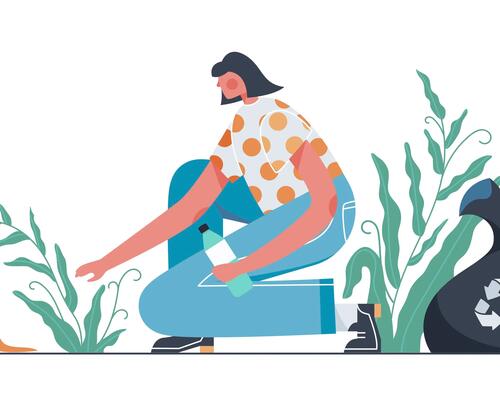Creating tools and places where to meet up
Climate inaction has a clearly identified dreaded enemy: Education. Knowledge sharing is, therefore, the most effective remedy to break up this well-known triangle.Discover the life cycle of goods that we manufacture or buy, know what impact our mobility and diet have, and understand the origin of the CO2 emissions generated by our clothes or smartphones, … there is a lot to learn.
So, the goal is to inform, unpack, explain, report, illustrate, etc, to make taking action seem more accessible and easier.To achieve this, knowledge must reach everyone, warns the transition specialists, and this is a real challenge. City and suburban inhabitants; the young and less young; national and local elected representatives; the head of large companies, Small Business managers and self-employed tradesperson; logistics hubs and human resources; institutions and voluntary organisations… It is about getting the whole world and society on board thanks to information, training and support.
Moving beyond inaction has to be done collectively. We, therefore, need to meet up. This is why it is crucial to imagine and nurture forums where the three corners of the triangle can meet up and cooperate. Workshops, collaborative platforms, citizens groups, and professional networks… there are numerous potential formats and mediums. Here are a few examples of forums leading the way on this topic:
- the Citizen's Climate Assembly
This tool of participatory democracy consists of bringing together a panel of people selected by lottery to learn about and discuss an issue and to put together recommendations in the collective interest. A Citizen's Assembly generally goes through a three-stage process: participants learn about the issue (in this case, on climate change), actively engage (discuss what is at stake and question the actors involved), and collective decision-making (the group provides its opinion(s)). The Citizen's Climate Assembly could be organised at national or local level. In France, several regions have launched such an initiative, including the Grenoble metropolitan area and the Occitanie region.
- Companies' Climate Convention
The Companies' Climate Convention is an organisation founded in 2020 in France to "irresistibly shift from an extractive economy towards a regenerative economy by 2030". Its mission is similar to the Climate Fresk but suitable for a specific audience: business decision makers. In 2024, over 1,000 companies were already committed to the approach.






